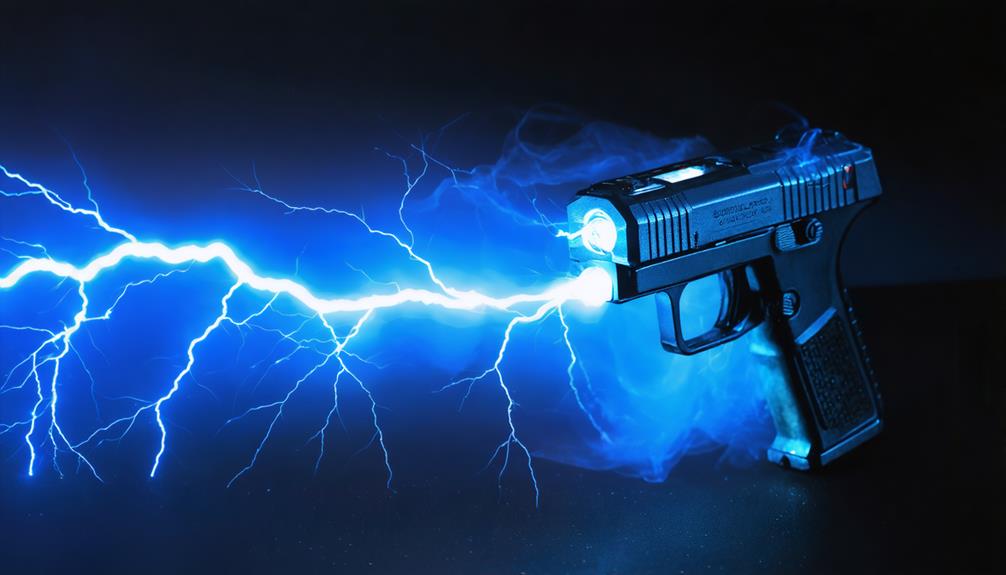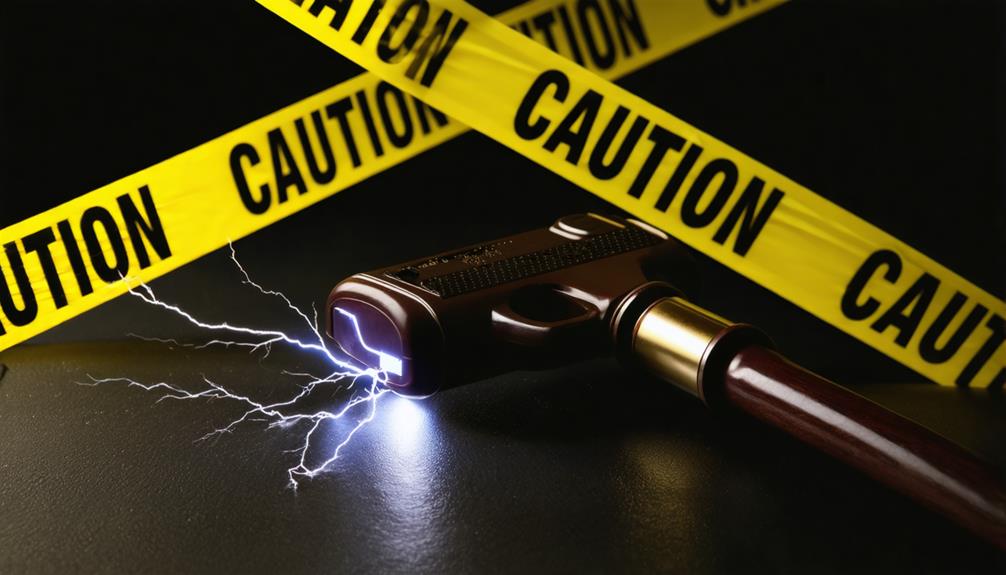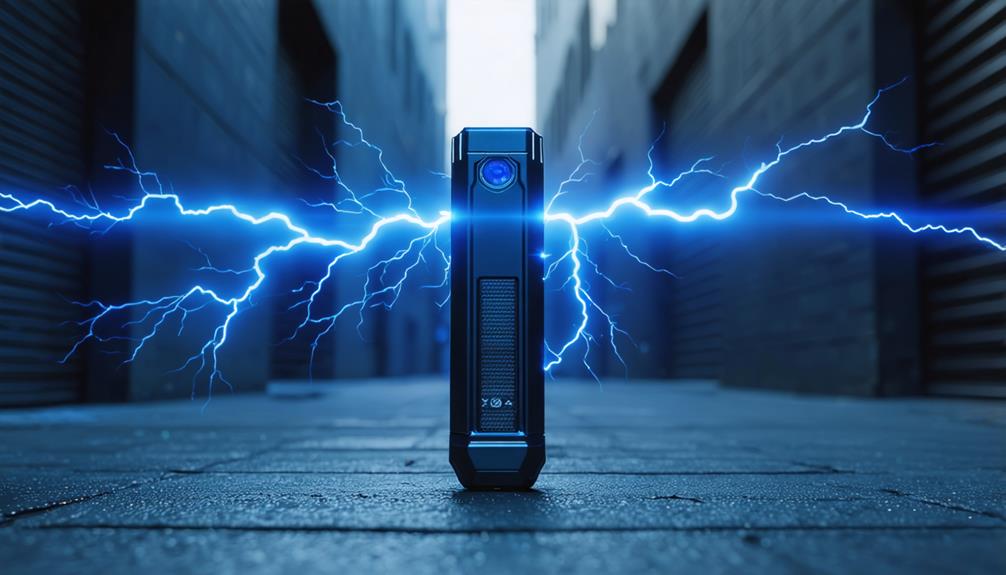
Brainstorm Security Shop

For Orders Over $199

On Any Of Our Products

Details On Refund Page
Stun guns are fascinating devices that employ advanced electrical technology to incapacitate a person temporarily. By delivering a high-voltage, low-amperage shock, these tools disrupt the body’s neuromuscular system, leading to a temporary loss of muscle control. But what exactly happens at the cellular level during this process, and how does this technology ensure safety while achieving its intended purpose? Understanding the intricate balance between effectiveness and non-lethality in an stun gun opens the door to a deeper appreciation of their design and functionality. Explore the nuances of this compelling technology as we unravel its operational secrets.
At the core of a stun gun’s functionality lies its ability to incapacitate a target through a sudden burst of electrical energy. This is achieved through a sophisticated integration of stun gun technology and fundamental electrical principles.
The primary mechanism involves delivering a high-voltage, low-amperage shock to the target. This electrical discharge disrupts the body’s neuromuscular system, causing temporary incapacitation without inflicting permanent harm.
Stun gun technology harnesses electrical principles by utilizing an oscillator, transformer, and capacitor circuit to efficiently convert and store electrical energy. The oscillator generates alternating current, which is then amplified by the transformer to reach the desired high voltage.
This stored energy is released in a rapid succession of electrical pulses, which are transmitted to the target upon contact. The strategic design ensures that the electrical charge affects the body’s nervous system, interrupting the communication between the brain and muscles.
Understanding how a stun gun functions requires examining its individual components, each playing a vital role in its operation.
These components have evolved over the years, reflecting the rich history of stun gun development and the diversity of stun gun types available today.
While the design and features may vary, the fundamental components remain consistent across different models, ensuring effective performance in a non-lethal self-defense tool.
At its core, a stun gun consists of:
The evolution of these components over time reflects advancements in technology and user needs, contributing to the wide range of stun gun types available today.
Understanding these components is essential for appreciating the device’s effectiveness and historical significance in personal defense.

The mechanism of action of a stun gun involves the delivery of an electrical charge designed to disrupt the body’s muscular and nervous systems temporarily. By emitting a high-voltage, low-amperage electrical discharge, the stun gun effectively overrides the body’s neuromuscular system. This electrical discharge is delivered through two metal prongs and penetrates the skin, creating an electrical circuit that interferes with the body’s normal electrical signals.
When a stun gun is used, the electrical discharge causes an involuntary muscle contraction, leading to a state known as neuromuscular incapacitation. This is achieved by depleting the glucose and ATP (adenosine triphosphate) reserves in the muscles, rendering them temporarily unable to function.
The voltage used is considerable enough to create a sensory overload, which confuses the nervous system and disrupts voluntary muscle control without causing permanent damage to the tissues.
In essence, the stun gun incapacitates the target by disrupting the communication between the brain and muscles, effectively immobilizing the individual for a short period. This temporary incapacitation provides a critical window for self-defense or escape, ensuring personal safety in threatening situations.
The precision and efficacy of this mechanism underscore the utility of stun guns in non-lethal defense scenarios.
Building on the understanding of how a stun gun disrupts the body’s systems, mastering effective usage techniques is paramount for ensuring personal safety. Proper application of a stun gun can significantly enhance its effectiveness as a self-defense tool.
One critical aspect of using a stun gun successfully is understanding the importance of target practice. Familiarity with the device helps users develop confidence and competence, enabling them to respond swiftly and accurately when faced with a threat.
For optimal self-defense, consider the following techniques:

When using a stun gun for self-defense, prioritizing safety and understanding legal constraints is crucial. Stun guns are designed to incapacitate an assailant temporarily, allowing users to escape potentially dangerous situations. However, it is essential to adhere to stun gun regulations and ensure that the device is used responsibly and legally.
In many regions, the possession and use of stun guns are subject to specific legal implications and restrictions. Some jurisdictions may require permits, while others may prohibit their use altogether. It is imperative to research local laws and regulations regarding stun guns to avoid legal repercussions. Understanding these regulations can prevent potential legal issues and ensure that individuals remain within the boundaries of the law when defending themselves.
Furthermore, safety considerations extend beyond legal compliance. Users should be adequately trained in operating a stun gun to prevent accidental discharges or misuse. Familiarity with the device’s features and functionalities can enhance its effectiveness and reduce the risk of injury.
Additionally, it is advisable to regularly inspect the stun gun to ensure it is in proper working condition.
Stun gun performance can be significantly affected by weather impact. Extreme conditions, such as heavy rain or freezing temperatures, may reduce effectiveness or cause malfunctions, thereby compromising reliability and safety. Proper maintenance and manufacturer guidelines are essential.
For optimal stun gun storage and safe handling, it should be kept in a dry, secure location, away from children and unauthorized users. Ensure the device is deactivated and periodically check for battery corrosion or damage.
Stun gun safety necessitates careful attention to medical considerations, as individuals with pre-existing heart conditions, pacemakers, or neurological disorders may face heightened risks. Consulting a healthcare professional before exposure is advisable to mitigate potential health hazards.
Stun guns necessitate routine care to ensure operational efficiency. Regular maintenance includes battery replacement and checking all components for wear. Proper stun gun care ensures reliable performance and extends the device’s lifespan, safeguarding users and enhancing functionality.
Signs of a malfunctioning stun gun include inconsistent electrical discharge, failure to activate, and unusual noises or odors. Regular inspections are crucial for stun gun safety, as these malfunction indicators can compromise the device’s reliability and effectiveness.
Stun guns operate by delivering high-voltage, low-amperage electrical bursts that incapacitate targets through neuromuscular disruption. This technology relies on rapid electrical pulses to induce involuntary muscle contractions and sensory overload, temporarily immobilizing the target by depleting glucose and ATP reserves. Understanding the components, mechanism, effective usage, and associated safety and legal considerations is crucial for responsible use. Stun guns provide a non-lethal means of self-defense, emphasizing temporary incapacitation without causing permanent harm.

Brainstorm Security Shop
1867 Caravan Trail
Ste 105
Jacksonville, FL 32216
Call us toll free: (800) 859-5566